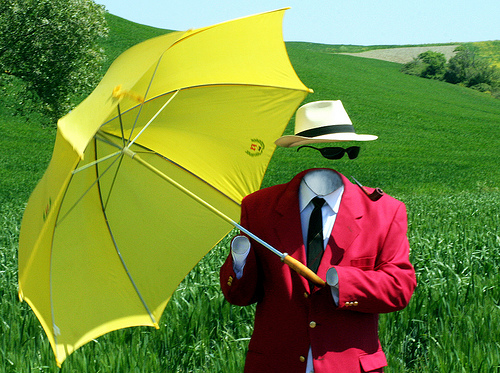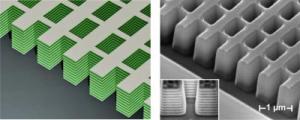
Photo by Firentzesca
Recently, attempts to make “cloaking technology” possible have reached a great level, with major break throws. Among mentionable achievements, more notable are the work of Oleg Gadomsky, a Russian professor that managed to redirect light around objects and that of the people from the University of Maryland, who reported the successful cloaking of small 2D objects from all light waves.
Now, Scientists have created two new types of materials that can bend light the wrong way, creating the first step toward an invisibility cloaking device. The people behind this major achievement are the researchers at the Nanoscale Science and Engineering Center at the University of California, Berkeley, being the first to manage to cloak 3D materials.
One approach uses a type of fishnet of metal layers to reverse the direction of light, while another uses tiny silver wires, both at the nanoscale level. Both are so-called metamaterials — artificially engineered structures that have properties not seen in nature, such as negative refractive index.
The materials were developed by two separate teams, both under the leadership of Xiang Zhang of the Nanoscale Science and Engineering Center at the University of California, Berkeley with U.S. government funding. One team reported its findings in the journal Science and the other in the journal Nature.
Don’t treat the issue too seriously though. We’re a long way from witnessing the presence of invisible people on the street or the cloaking of whole buildings. Far from it. Here’s what Jason Valentine, one of the members of the projects, had to say.
“We are not actually cloaking anything,” Valentine said in a telephone interview. “I don’t think we have to worry about invisible people walking around any time soon. To be honest, we are just at the beginning of doing anything like that.”Valentine’s team made a material that affects light near the visible spectrum, in a region used in fiber optics.
“In naturally occurring material, the index of refraction, a measure of how light bends in a medium, is positive,” he said.
“When you see a fish in the water, the fish will appear to be in front of the position it really is. Or if you put a stick in the water, the stick seems to bend away from you.”
 On the left is the conceptual rendered “fishnet” design for the second cloaking material. The actual produced material is seen on the right in an electron microscope picture. It is capable of bending light backwards.
On the left is the conceptual rendered “fishnet” design for the second cloaking material. The actual produced material is seen on the right in an electron microscope picture. It is capable of bending light backwards.
What’s a negative index of refraction, you ask?
“Instead of the fish appearing to be slightly ahead of where it is in the water, it would actually appear to be above the water’s surface,” Valentine said. “It’s kind of weird.”
For a metamaterial to produce negative refraction, it must have a structural array smaller than the wavelength of the electromagnetic radiation being used. Some groups managed it with very thin layers, virtually only one atom thick, but these materials were not practical to work with and absorbed a great deal of the light directed at it.
“What we have done is taken that material and made it much thicker,” Valentine said.
His team, whose work is reported in Nature, used stacked silver and metal dielectric layers stacked on top of each other and then punched through with holes. “We call it a fishnet,” Valentine said.
Immediate applications might be superior optical devices, Valentine said — perhaps a microscope that could see a living virus.
“However, cloaking may be something that this material could be used for in the future,” he said. “You’d have to wrap whatever you wanted to cloak in the material. It would just send light around. By sending light around the object that is to be cloaked, you don’t see it.”









